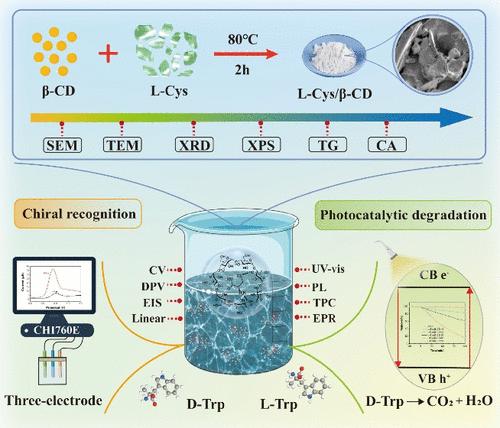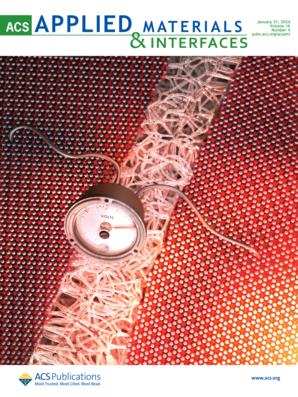Enantioselective Recognition Driven Photocatalytic Degradation of d-Tryptophan Enantiomers Based on l-Cysteine-Modified β-Cyclodextrin
IF 8.3
2区 材料科学
Q1 MATERIALS SCIENCE, MULTIDISCIPLINARY
引用次数: 0
Abstract
The enantioselective recognition and separation of racemic tryptophan are of significant importance in the fields of medicine, pharmaceutics, and biochemistry. However, conventional methods are costly, energy intensive, and environmentally unfriendly. In this case, l-Cys with amino (−NH2) and sulfhydryl (−SH) groups was chosen to modify β-CD with a chiral cavity to achieve self-assembly via hydrogen bonding, which not only serves as an electrochemical chiral sensor with enhanced chiral sites at the sensing interface but also achieves a higher enantioselectivity for d-tryptophan enantiomers through hydrogen bonding between the host and guest. Moreover, the d-tryptophan enantiomers were subsequently degraded under catalytic conditions simulating visible light, which was a new approach to introduce chiral properties in photocatalysis without organic synthesis. The use of inclusion-complex formation with β-CD combined with simple electrochemical technology and photocatalytic degradation techniques to efficiently and rapidly identify and degrade harmful d-type amino acid enantiomers offers new avenues, which would have great potential in future studies.

求助全文
约1分钟内获得全文
求助全文
来源期刊

ACS Applied Materials & Interfaces
工程技术-材料科学:综合
CiteScore
16.00
自引率
6.30%
发文量
4978
审稿时长
1.8 months
期刊介绍:
ACS Applied Materials & Interfaces is a leading interdisciplinary journal that brings together chemists, engineers, physicists, and biologists to explore the development and utilization of newly-discovered materials and interfacial processes for specific applications. Our journal has experienced remarkable growth since its establishment in 2009, both in terms of the number of articles published and the impact of the research showcased. We are proud to foster a truly global community, with the majority of published articles originating from outside the United States, reflecting the rapid growth of applied research worldwide.
 求助内容:
求助内容: 应助结果提醒方式:
应助结果提醒方式:


